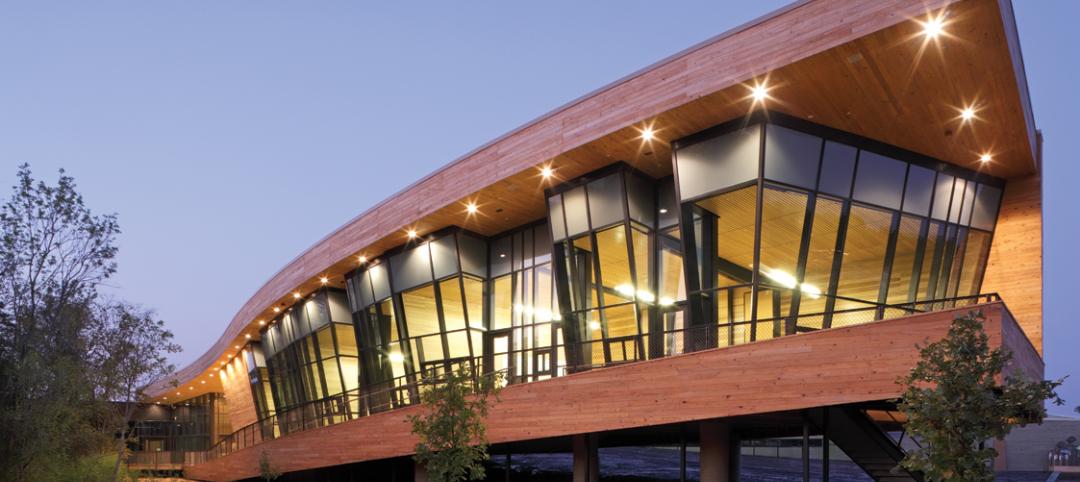Two of the nonresidential building industry’s leading engineering firms have joined forces to leverage their similar sizes and market strategies.
KJWW Engineering, based in Rock Island, Ill., and TTG Engineers, based in Pasadena, Calif., will continue to operate under their own banners, but within a newly created holding company with common management.
Ranked 11th and 14th, respectively, on BD+C’s 2014 Engineering Giants list, the firms’ combined revenues last year would have elevated them to No. 4.
The merger unites two companies with a combined 860 employees working in 25 national and five international locations. “The merger gives TTG and KJWW a larger presence throughout the U.S. and strengthens our collective dominance in the healthcare, higher education, government, entertainment, industrial, and transportation markets,” said Zareh Astrouian, PE, SE, president of TTG. Paul VanDuyne, PE, KJWW’s president, added that the merger “allows us to build on those strengths with greater geographic mobility.”
In an interview with BD+C, VanDuyne—who will be CEO of the holding company, with Astrouian its chairman— said the two firms would spend the next 15 months integrating their operational infrastructure, such as accounting, IT, etc. Over that period, the companies will keep their engineering teams intact, while integrating similar practices. VanDuyne was quick to note that the merger is not a prelude to staff reductions. “Human capital is at such a premium right now, and we would be very happy to go through this process without losing a single person.”
VanDuyne believed this merger would allow both companies to serve national end-user clients more effectively. TTG should gain from KJWW’s strengths in such areas as medical equipment planning and architectural lighting, while KJWW should benefit from TTG’s expertise in the entertainment sector. “We feel this is a great opportunity to take a look at a brand new organization. That’s a little bit extraordinary for two $50 million companies,” he said.
The firms’ executives have been discussing this merger for about a year, said VanDuyne. “It started with a phone call about getting together. We met at [KJWW’s] offices in Chicago, and it went on from there.”
KJWW and TTG announced their merger less than a month after Thornton Tomasetti merged with Weidlinger Associates. While VanDuyne didn’t think these events necessarily presaged more consolidation among engineering companies, he did note that “scale” is becoming more important for firms to be relevant to clients in such areas as BIM and sustainability.
It hasn’t been determined whether the firms would eventually operate out of a single headquarters. That seems unlikely, at least in the near future, especially when Van Duyne said “I don’t think this is the last time you’re going to hear from us about expanding across the country.”
Related Stories
| Nov 2, 2010
11 Tips for Breathing New Life into Old Office Spaces
A slowdown in new construction has firms focusing on office reconstruction and interior renovations. Three experts from Hixson Architecture Engineering Interiors offer 11 tips for office renovation success. Tip #1: Check the landscaping.
| Nov 2, 2010
Cypress Siding Helps Nature Center Look its Part
The Trinity River Audubon Center, which sits within a 6,000-acre forest just outside Dallas, utilizes sustainable materials that help the $12.5 million nature center fit its wooded setting and put it on a path to earning LEED Gold.
| Nov 2, 2010
A Look Back at the Navy’s First LEED Gold
Building Design+Construction takes a retrospective tour of a pace-setting LEED project.
| Nov 2, 2010
Wind Power, Windy City-style
Building-integrated wind turbines lend a futuristic look to a parking structure in Chicago’s trendy River North neighborhood. Only time will tell how much power the wind devices will generate.
| Nov 2, 2010
Energy Analysis No Longer a Luxury
Back in the halcyon days of 2006, energy analysis of building design and performance was a luxury. Sure, many forward-thinking AEC firms ran their designs through services such as Autodesk’s Green Building Studio and IES’s Virtual Environment, and some facility managers used Honeywell’s Energy Manager and other monitoring software. Today, however, knowing exactly how much energy your building will produce and use is survival of the fittest as energy costs and green design requirements demand precision.
| Nov 2, 2010
Yudelson: ‘If It Doesn’t Perform, It Can’t Be Green’
Jerry Yudelson, prolific author and veteran green building expert, challenges Building Teams to think big when it comes to controlling energy use and reducing carbon emissions in buildings.
| Nov 2, 2010
Historic changes to commercial building energy codes drive energy efficiency, emissions reductions
Revisions to the commercial section of the 2012 International Energy Conservation Code (IECC) represent the largest single-step efficiency increase in the history of the national, model energy. The changes mean that new and renovated buildings constructed in jurisdictions that follow the 2012 IECC will use 30% less energy than those built to current standards.
| Nov 1, 2010
Sustainable, mixed-income housing to revitalize community
The $41 million Arlington Grove mixed-use development in St. Louis is viewed as a major step in revitalizing the community. Developed by McCormack Baron Salazar with KAI Design & Build (architect, MEP, GC), the project will add 112 new and renovated mixed-income rental units (market rate, low-income, and public housing) totaling 162,000 sf, plus 5,000 sf of commercial/retail space.
| Nov 1, 2010
John Pearce: First thing I tell designers: Do your homework!
John Pearce, FAIA, University Architect at Duke University, Durham, N.C., tells BD+C’s Robert Cassidy about the school’s construction plans and sustainability efforts, how to land work at Duke, and why he’s proceeding with caution when it comes to BIM.
| Nov 1, 2010
Vancouver’s former Olympic Village shoots for Gold
The first tenants of the Millennium Water development in Vancouver, B.C., were Olympic athletes competing in the 2010 Winter Games. Now the former Olympic Village, located on a 17-acre brownfield site, is being transformed into a residential neighborhood targeting LEED ND Gold. The buildings are expected to consume 30-70% less energy than comparable structures.
















